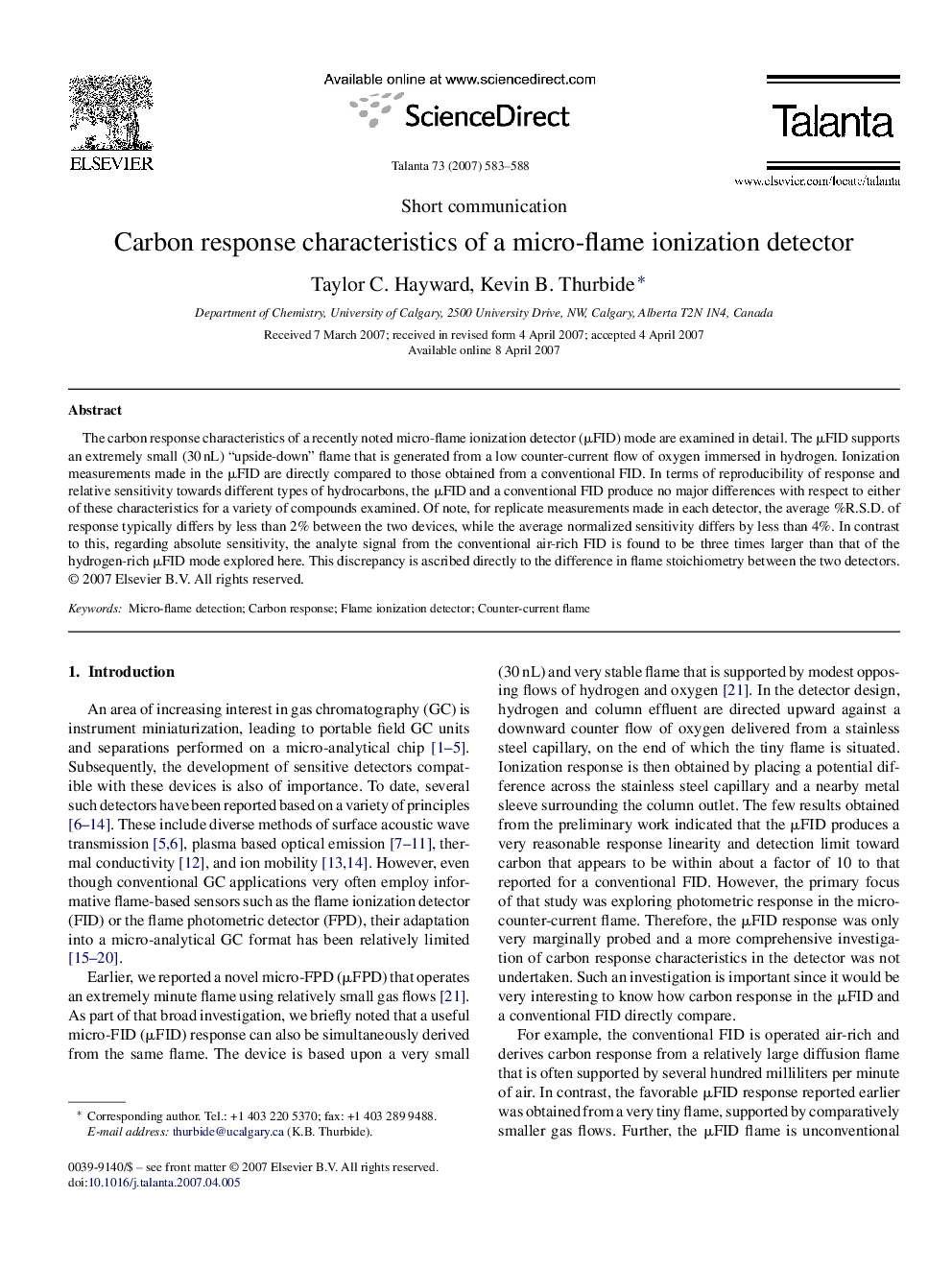| Article ID | Journal | Published Year | Pages | File Type |
|---|---|---|---|---|
| 1247225 | Talanta | 2007 | 6 Pages |
The carbon response characteristics of a recently noted micro-flame ionization detector (μFID) mode are examined in detail. The μFID supports an extremely small (30 nL) “upside-down” flame that is generated from a low counter-current flow of oxygen immersed in hydrogen. Ionization measurements made in the μFID are directly compared to those obtained from a conventional FID. In terms of reproducibility of response and relative sensitivity towards different types of hydrocarbons, the μFID and a conventional FID produce no major differences with respect to either of these characteristics for a variety of compounds examined. Of note, for replicate measurements made in each detector, the average %R.S.D. of response typically differs by less than 2% between the two devices, while the average normalized sensitivity differs by less than 4%. In contrast to this, regarding absolute sensitivity, the analyte signal from the conventional air-rich FID is found to be three times larger than that of the hydrogen-rich μFID mode explored here. This discrepancy is ascribed directly to the difference in flame stoichiometry between the two detectors.
